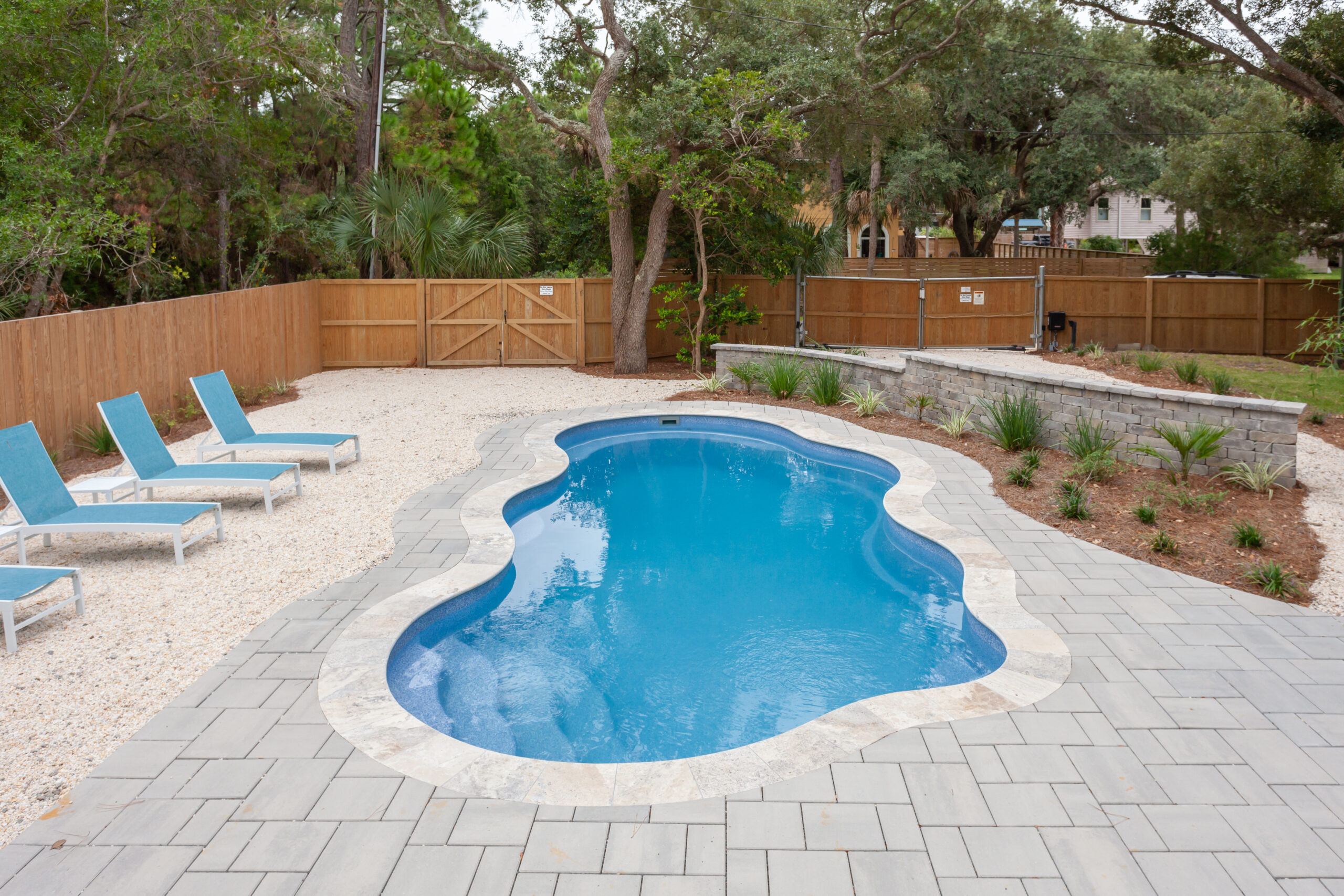How to Test and Balance Pool Water
Crystal-Clear Water Starts with Precision
Balanced water is the foundation of a clean, safe, and long-lasting pool. Whether you maintain your pool weekly or rely on Heritage Pools’ expert care, understanding how to test and adjust your water chemistry helps protect swimmers, surfaces, and equipment year-round.
Why Water Balance Matters
- Prevents algae and bacteria growth
- Protects pool surfaces from corrosion or scaling
- Extends equipment life by minimizing chemical wear
Keeps water clear, comfortable, and safe
What to Test (and Ideal Ranges)
| Parameter | Ideal Range | Purpose |
| Chlorine (or Free Chlorine) | 1.0 – 3.0 ppm | Sanitizes water |
| pH | 7.2 – 7.6 | Comfort and effectiveness of chlorine |
| Total Alkalinity | 80 – 120 ppm | Stabilizes pH |
| Calcium Hardness | 200 – 400 ppm | Protects surfaces and equipment |
| Cyanuric Acid (Stabilizer) | 30 – 50 ppm | Shields chlorine from sunlight (for chlorine pools) |
| Salt Level (if applicable) | 2,500 – 3,500 ppm | Required for chlorine generation in salt systems |
How to Test Your Pool Water
- Use Test Strips or a Digital Tester
Dip test strips or draw a water sample for digital analysis. Always test from elbow-depth water, away from return jets. - Check Results and Compare
Match strip colors or read digital values, and compare with ideal ranges above. - Adjust Accordingly
- Raise chlorine with liquid chlorine or tablets
- Lower pH with muriatic acid; raise it with soda ash
- Adjust alkalinity with baking soda or dry acid
Add stabilizer or calcium as needed

Need Help? Let Us Handle It.
At Heritage Pools, water care is part of every maintenance visit. We test, adjust, and track your chemistry using proven methods—whether your system runs on chlorine or salt.
Swim Here. Stay Balanced.